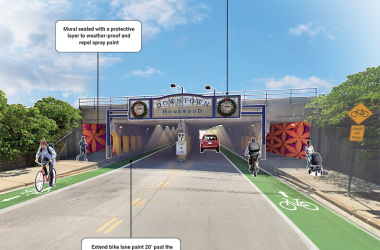Gov. JB Pritzker provided an update on Tuesday about the state’s current testing and hospital capacity and laid out measures to increase that capacity to meet the anticipated need as the COVID-19 pandemic continues.
“We’re using a two-pronged approach to make sure a worst-case scenario does not become our reality,” Pritzker said. “First, we put in place protective measures to suppress the spread. Second, we are working to increase our health care capacity statewide so that when we do arrive at our next phase we have the capacity to meet that need.”
Testing capacity
Illinois was among the first states to test for COVID-19 in state-managed labs, beginning with the capacity to run 50 tests a day in February and since expanding to three state labs running 600 tests a day.
The Illinois National Guard (ILNG) has also opened the state’s first drive-thru COVID-19 testing site on the northwest side of Chicago, adding 250 tests a day to the state’s capacity.
In addition, the U.S. Department of Health & Human Services has opened three sites with their private partners throughout the Chicago suburbs – one in Cook County and two in Will County. Each has the capacity to run nearly a 100 tests a day, and up to 250 with expanded staffing.
All four of the mobile testing sites operate under U.S. HHS criteria which prioritizes health care workers and first responders. As availability allows, testing criteria may be expanded beyond this initial pilot program.
Finally, there are four commercial labs and 15 hospital labs operating across the state, which average about 1,500 tests per day. IDPH continues to work with hospitals to stand up their own labs, providing positive specimens to hospitals for validation so they can come online faster. Several existing hospital labs are building out their capacity and are within two weeks expected to provide additional 2,805 tests a day, totaling more than 4,300 a day.
Working to expand capacity by thousands of more tests a day, the state continues to partner with hospitals to bring additional labs online and is exploring additional mobile testing sites across the state, along with continued consistent delivery of necessary supplies, such as the reagent and viral transport media.
Hospital capacity
Hospitals across the state are meeting the current need, and the state is building additional capacity to treat patients that may need care in the future.
As of March 23, data reported to the Illinois Department of Public Health (IDPH) showed 12,588 non-ICU beds, 51.6 percent of capacity; 1,106 ICU beds, 57.4 percent of capacity; and 1,595 ventilators, 28.4 percent of capacity available in hospitals across the state.
Looking ahead, IDPH has put together projections for the hospital infrastructure needed to meet a surge of demand on the health care system if no protective measures were put in place — the worst-case scenario. Because of measures the state has implemented in recent weeks, the anticipated need is expected to fall below these forecasts.
On March 30, IDPH projected that hospitals across the state would need an additional 2,511 non-ICU beds, 837 ICU beds and 419 ventilators compared to current capacity if the state took no action to combat the virus.
On April 6, IDPH projected that hospitals would need an additional 28,222 non-ICU beds, 9,407 ICU beds and 4,704 ventilators compared to current capacity without any protective measures.
This projected surge emphasizes the urgency that brought Pritzker to take several actions to “flatten the curve” and prevent a rapid increase of cases.
In addition to those protective measures – which include the stay at home order, ban on gatherings exceeding 10 people, school closures and social distancing guidelines – the Governor has taken several steps to increase the capacity of the health care system:
- Triage centers: The Illinois Emergency Management Agency (IEMA) has deployed 49 tents to area hospitals to set up triage centers outside their facilities to evaluate potential COVID-19 patients. In total, 66 of the state’s over 200 hospitals are currently operating with this expanded capacity. IEMA is working with 26 additional hospitals across the state to open new triage centers.
- Repurposing old hospitals: IDPH, IEMA, the Illinois National Guard and the U.S. Army Corps of Engineers are investigating closed hospitals that could temporarily reopen to support our COVID-19 response. In a worst-case scenario surge, the state would dedicate several dozen existing hospitals almost entirely to COVID-19 patients, moving non-COVID patients to other hospitals, including these re-outfitted locations.
- Expanding capacity in existing hospitals by acquiring critical equipment: The administration continues to scour the globe for essential medical equipment like ventilators, including working with scientists and experts in Illinois and beyond to pursue innovative options. The Governor also spoke with President Trump yesterday and informed him that Illinois needs millions of N95 masks and hundreds of ventilators. The President promised assistance, and yesterday afternoon, the White House notified IDPH that Illinois will be receiving 300 ventilators and 300,000 N95 masks from FEMA in the coming days.


